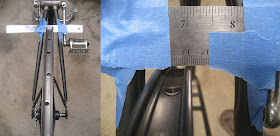This California Common wort with Petrus Pale and Oud Bruin was my first beer that I attempted the bottle dregs in 1 gallon container experiments. So far my techniques have changed only a little bit. I now make starters for the dregs by pouring 4-6 oz of 1.030-1.040 wort straight into the bottle a few days before brew day. I have also been trying non sour beer dregs with some good success (look forward to future posts).
The beer has changed considerably over the course of a year and a half. And to be honest I hope it will continue to change with time.
Notes:
- Be careful with oak cubes on pale beers (.25 oz French Oak/ 1 gal for 15 months was too much)
- Do not use hoppy/bitter wort for long aging sour beers. The aged hop flavors are not good and the bitterness clashes with the sourness. The bad hop flavors and bitterness have faded in this beer, but not enough. Now dry hopping a sour beer at bottling is a different story.
- Learn to taste and then adjust the beer as it ages. For example, I added oak cubes to this beer before I really tasted it and knew that it would keep this underlying bitterness. What I should have done was held back on the cubes and then dry hopped this beer before bottling. With my sour beers now I taste every 3 months and starting month 6, after the beer's character has started to development, I will make adjustments.























